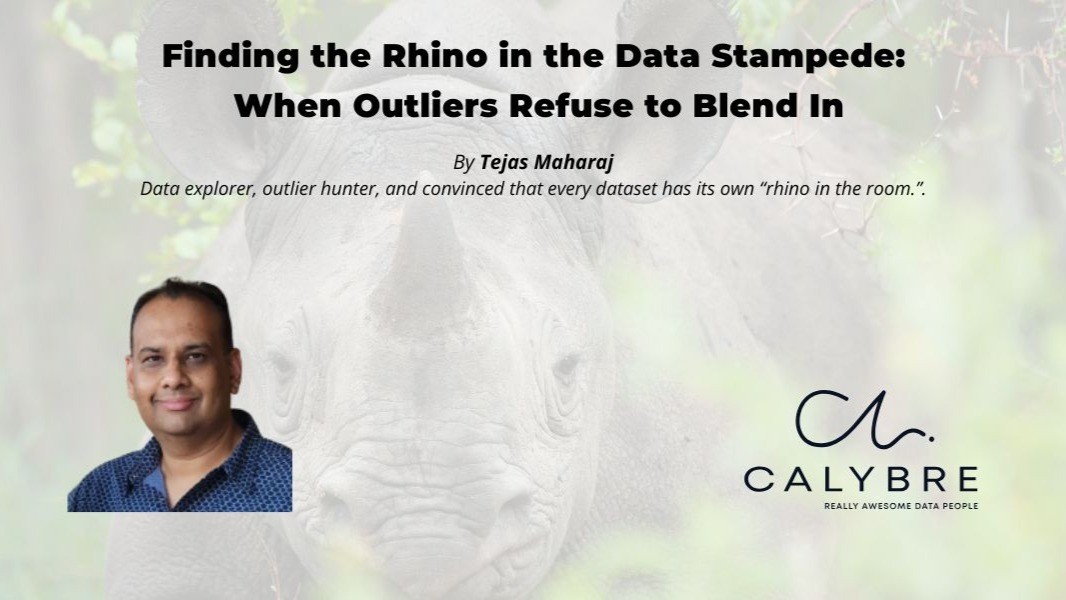
Hey there, fellow data enthusiast!
Ever found yourself wondering how data scientists manage to spot a needle in a haystack? The answer often lies in a field called anomaly detection - perfect for picking out unusual events, whether it’s a dodgy transaction or, in this case, a rather special rhino.
Let’s get into it: imagine you’re staring at a dataset of 1,000 African animals. Most are the usual suspects: elephants, hippos, giraffes. But somewhere in the mix, there’s a single rhino with a peculiar trait: it’s not exactly small, but its skin is ridiculously thick for its weight. That’s the one we’re after.
So, how do you find this oddball without knowing where it’s hiding? The trick is to use two features - weight (in kg) and skin thickness (in cm) - and let the algorithm do the heavy lifting.
Now, instead of hunting for the rhino directly, we train a model to figure out what “normal” looks like. Anything that doesn’t fit the mould gets flagged as an anomaly. Here, we’re using Isolation Forest. If you haven’t come across it, think of it as a bunch of decision trees that keep splitting the data. Anomalies get “isolated” faster - fewer splits, quicker separation. It’s a neat way to catch rare outliers.
If you’re curious about the code, I’ve put together a step-by-step guide: Google Colab: Find the Rhino
Here’s how it plays out:
- Creating the Dataset: We build our virtual animal kingdom - 999 “normal” animals with realistic weights and skin thickness. Elephants? Heavy, thick-skinned. Hippos? Also hefty, but not quite elephant-level. Giraffes? Tall, heavy, but their skin’s on the thinner side. The rest are smaller, lighter, and have thin skin. Then, we sneak in our rhino. Its weight is close to a hippo’s, but its skin is much thicker ... making it a clear anomaly.
- Preparing the Data for the Model: Before we let the model loose, we tidy up. The Animal_Name column gets dropped - otherwise, the model might cheat and just pick out “Rhino.” We want it to figure things out based on features alone. For Animal_Colour, we use one-hot encoding (pd.get_dummies), turning colours into numbers so the model can actually process them.
- Running the Isolation Forest Model: With the data prepped, it’s time to train. IsolationForest(contamination=...): We tell the model we expect only a tiny fraction of anomalies - about 1 in 1,000. model.fit_predict(X): The model learns what’s normal, then gives each animal an anomaly score. -1 means anomaly, 1 means normal.
- Post-Processing - Filtering Our Results: We filter for animals with an anomaly_score of -1. To avoid picking up tiny, oddball animals, we add a check for Weight_kg >= 35. It’s a simple way to refine the results - sometimes, models can be a bit too enthusiastic about what counts as “weird.”
The Conclusion: The Rhino is Found! The script nails it: the rhino stands out. It’s a solid example of how anomaly detection isn’t just academic; it’s practical. By teaching a model what’s “normal,” you can quickly spot the unusual. This approach pops up everywhere, from cybersecurity to quality control. Next time you’re searching for something out of the ordinary, maybe give this method a go.
In a world of data, it’s often the rare rhino that teaches us the most - standing out, refusing to blend in, and reminding us why outliers matter. Here’s to supporting real rhinos too: may we always spot them, protect them, and let their uniqueness inspire us.




